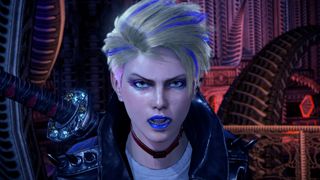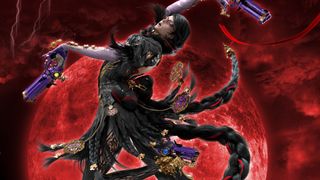Bayonetta 3 patch improves gameplay, but the Nintendo Switch still holds it back
>
The latest Bayonetta 3 patch has just been released and offers a slew of solid gameplay improvements that should make the playable characters’ journey more enjoyable.
Patch 1.2.0 for Bayonetta 3 launched with detailed patch notes, showing us the latest batch of improvements PlatinumGames has made to Umbra Witch’s latest Nintendo Switch adventure. The full notes can be read at Nintendo’s support website (opens in new tab).
The patch improvements for Bayonetta 3 are largely gameplay related, focusing mainly on tweaks to secondary character Viola’s move set. For example, Platinum has now relaxed the conditions that allow her to activate Witch Time, a time-delaying ability that makes it easier to unleash combos on enemies. Previously, Viola’s Witch Time activation was frustratingly inconsistent and felt a bit unnatural, so it’s nice to see the developers have fixed this bug relatively quickly.
Changes have also been made to some of the more frustrating Niflheim bonus challenges. These bite-sized missions require players to meet certain criteria, such as defeating a number of enemies within a time limit or taking as few hits as possible. A handful of particularly aggravating Niflheim challenges have now had their requirements relaxed.
Unfortunately, it’s not all good news. The patch notes make no mention of Bayonetta 3’s shaky performance. This means the game’s busier battle sequences and bombastic set pieces still likely feature rocky frame-pacing. Many of these lower Bayonetta 3’s framerate to an unstable 30fps, taking much of the satisfaction out of combat that 60fps would have eradicated.
The shadow continues to be cast
I’ve previously argued that Bayonetta 3 is being held back by the Nintendo Switch. The console’s outdated Tegra X1 custom mobile chip doesn’t do the game’s high-octane action any favors. Of course, PlatinumGames isn’t entirely to blame for this, but it does mean that Bayonetta 3’s more ambitious moments aren’t as memorable as they otherwise could be.
Bayonetta 3’s performance is an unfortunate blip in the company’s resume. The games typically work as very stable frame rate targets. Astral Chain, for example, maintains a locked 30fps for most of its runtime, and combat feels all the more satisfying for this. Likewise, the Nintendo Switch ports of Bayonetta and Bayonetta 2 can both keep their 60fps targets under great pressure.
I don’t expect miracles here. Platinum probably won’t fix Bayonetta 3’s performance issues overnight. But I would like to see the developer take small steps to improve performance over the course of the year. Smaller adjustments here and there could lead to a more stable whole.
Sure, more powerful hardware, such as a Nintendo Switch Pro model, could go a long way in boosting the performance of the best Nintendo Switch games across the board, but whether that’s going to be mid-gen or next-gen is yet to be seen to see.


